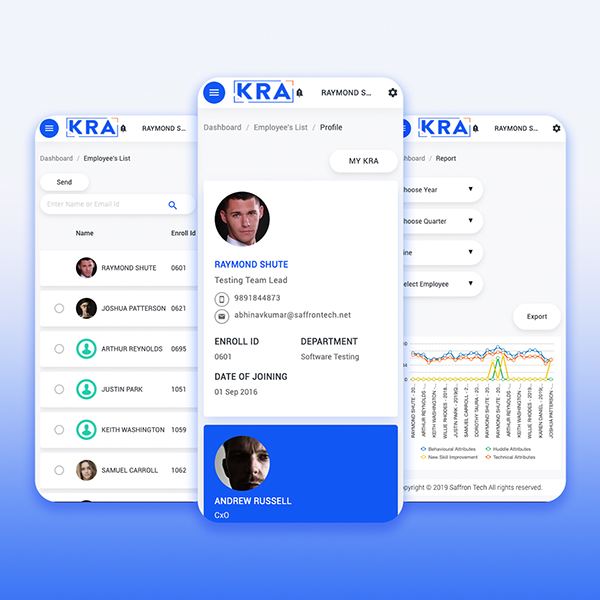Published by: Brett Malden, VP Innovation + Technology, BrandStar Tech
The coronavirus is battering the economy and creating uncertainty about future demand. The global economy is forecast to contract by 3 billions of employees, customers and consumers are unable to leave their homes, travel, shop or in some cases work. This has paralyzed entire industries, although created opportunities for others. The uncertainty about the future is so great that 20% of the corporations in the S&P1500 have withdrawn investor guidance on revenues and profits for the coming year.
Every economic crisis has both winners and losers warns Dave Reibstein, Professor of Marketing at the Wharton School of Business. “During various major crises that affect the economy—9/11, the 2008 financial crisis, and now the global spread of Covid-19 – all the players in the economy are not affected equally. Certainly, large segments like retail, restaurants, and travel are negatively impacted; but, there also will be economic benefactors with Covid-19. Some of the obvious businesses that gain sales are hand sanitizers, remote communications technology, home food delivery, and streaming services, just to name a few. Still others will adapt to seize opportunity in the crisis. We are already seeing a variety of businesses pivoting their focus to help scale drug testing and health care capacity, supporting the virtual enterprise, or plugging holes in broken supply chains.
In a crisis like this, leaders must laser focus their organizations on survival, employee health, liquidity, protecting customer relationships and maintaining supply chains. For the past 90 days, sales and marketing leaders around the globe have been leading crisis task forces to understand and manage the immediate impact the Covid-19 virus is having on demand and consequently on sales and marketing resource allocation, budgets, investments and plans.
In addition to making painful budget choices, growth leaders must also remain aware of the structural changes going on around them and keep an eye on the long term. Because when the “bottom” comes into sight in several months, every business will turn their attention to rebuilding and adapting to the new normal. “Many of the gains made during the crisis will become permanent” notes Reibstein. “For example, we can fully expect a faster transition to virtual meetings, classrooms, and selling models that will become permanent after the crisis is long past. Direct online selling will get a boost that will not just rebound back to its pre-disease levels, but we will find a hysteresis, that is a long-term effect.
Mo Katibeh, the CMO of AT&T agrees. “We are seeing a variety of businesses benefit from the dramatic increases in usage of video games, OTT streaming video, and unified communications in the wake of shelter-in-place orders. And longer term, we expect that telehealth and tele-learning will gain a strong foothold in a post-Covid economy. There will also be secondary effects of changing behavior – such as the accelerated growth of available but not yet broadly adopted technologies like robotics in retail, augmented reality in selling channels, and as a training enabler, and Business 5G deployed at hospitals, factories and entertainment venues.”
There are seven questions every growth leader needs to be asking at the dawn of the Covid-19 economy to anticipate the short, medium, and long-term impacts on their growth potential and strategies.
1 HOW CAN MY FIRM CONTRIBUTE TO THE SOLUTION?
In the wake of the coronavirus, companies are either victims, essential services to surviving the crisis, or quickly pivoting to become part of the solution and recovery. CMOs must ask to what degree is their business able to solve problems and provide relief to build customer goodwill, reinforce their brand purpose, and support their corporate social responsibility agenda? “A lot of our clients are looking for help pivoting to reposition in this environment and take advantage of opportunities, address existential threats, and invent new services and solutions that address the disruption caused by the Covid-19 outbreak,” according to Ed Keller. “Our clients are largely trying to either maintain essential services/functions in a remote work environment or rushing to position for aid from the $2 Trillion CARES act. I’m using Maslow’s hierarchy as an example – people are focused on meeting basic, existential needs; clients aren’t interested in strategy work or even mundane operating improvements. They are really focused on running the basic machinery.
2 IS THIS THE TIME TO BE CUTTING?
As the economic toll of Covid-19 mounts, there will be constant pressure to reduce “unnecessary” expenses. “Every business is taking a hard look at all spending, including sales and marketing, to survive in the Covid-19 crisis,” reports Chris Hummel, the CMO of United Rentals. “We’re no different. Marketing can be a particularly juicy target for cost cutting, especially since the cuts are considered “painless.” Not so fast. Cuts in marketing usually drag down demand and sales, so what happens when the revenue hole created outweighs cost savings?” Professor Reibstein reminds business leaders with the luxury of retaining marketing spend to consider the opportunities a crisis like this presents. “Cost cuts are inevitable in the crisis and marketing expenditures are often fungible. That said, while others are spending less, it makes whatever spending remains more effective,” according to Reibstein. “Those that invested during the 2008 financial crisis, thrived while others fled. “Share of voice” will never be greater. Massive industries, such as all travel related as well as political advertising are down considerably at the same time people are in front of their screens more than ever and attention may never be greater. This may be the time to invest, that is, if the business can afford to.”
3 HOW DO WE LEAD AND ENABLE REMOTE REVENUE TEAMS IN A CRISIS?
Managing, coaching and motivating sales, call center, and service employees in a work at home environment is creating immense challenges for sales leaders. “From a sales channel perspective, organizations are quickly adapting to having tens of thousands of salespeople, call center representatives and customer support agents working from home, shares Mo Katibeh of AT&T. “They are rushing to provide their front-line customer facing employees with the systems, support and communications infrastructure they need to engage, retain and acquire customers in a work at home setting. This includes fundamental hardware like PCs, mobility enabled hot spots, collaboration applications, and remote access VPN capability to give them the secure and scalable access to the applications, systems, networks, and databases they need to do their jobs from home productively as well as support high quality videoconferencing experiences.”
4 WHERE WILL CUSTOMER ENGAGEMENT COME FROM?
Sales teams will need to replace the millions of face-to-face sales meetings that vanished with restrictions on business travel and the cancellation, delay or digital conversion of thousands of industry conferences, events, and forums. For example, SXSW cancelled its annual event which draws 280,000 attendees. “A big change will be adapting to selling without the benefit of face-to-face interaction in sales meetings or the many sales conferences, events, or trade shows in the industries we serve” shares Ed Keller, the CMO of Guidehouse. “In particular our relationship leaders are facing challenging times when forced to work remotely because they rely heavily on in-person buyer engagement to build the trust needed to acquire net new client relationships.”
5 WHERE WILL THE MEDIA EYEBALLS COME FROM?
CMOs must find ways to replace the billions of “live eyeballs” that were lost with the cancellation or delay of live sports, entertainment and arts sponsorship events to build awareness and demand for their offerings. Before the coronavirus struck, brands were forecasted to invest over $68 Billion in sports, entertainment, cause, and event sponsorship properties in 2020. Since then, thousands of these events have been cancelled or delayed – including the delay of the Tokyo Olympics – where brands had invested over $5Billion to reach a global audience – and the cancellation of March Madness.
6 HOW QUICKLY CAN WE DEVELOP AND SCALE DIGITAL SELLING CHANNELS?
How and how quickly can your organization develop and enable digital and virtual selling channels has emerged as a critical issue in a market where these channels have become essential to transacting with work-at-home buyers and consumers. In general, we’re seeing businesses that embraced digital first business models are doing much better than those that did not,” reports Joe Galvin, the Chief Research Officer of Vistage Worldwide. “Businesses that invested in building a strong digital infrastructure are benefiting from this dynamic because they have the ability to support DTC commerce and virtual selling models.” Chris Hummel views scaling back on digital channel investment as an existential risk. “Customers are moving online. They expect a great experience online. And increasingly want to buy online. Remote working in the wake of the coronavirus is only going to accelerate this shift. Before the crisis some reports suggest that 12% of the sales of B2B products and services across industries were online. That number will only grow in the new normal. So, the impact of digital cuts on revenue will be dramatic and quick.”
7 WHEN IS THE BOTTOM AND WHEN SHOULD I START REINVESTING?
The big questions are when is the bottom and when should we begin to reinvest?” according to Joe Galvin. “Business leaders will stay focused on crisis management until we find the bottom of this one and can assess the damage and determine how long they can survive at this velocity. CEOs are asking when will we have line of sight on when the pandemic is under control so we can shift from crisis to recovery and reactivate face-to-face events, sponsorships and selling channels as part of the go to market mix.” Professor Reibstein reinforces the importance of getting this timing right. “ It’s a very difficult balance for a business leader. Do we wait until the bottom, or do we start reinvesting before we get there? Do we have to wait until full recovery, or will that be too late? Will the cost to regain lost ground be higher than it would have been if we had invested earlier? Mo Katibeh at AT&T shares the same perspective. “Tactically, we’re starting to ask when we will hit peak usage because there are only so many remote users and so many minutes of use in a day. The good news is so far the networks are handling this traffic well. Beyond that, when the “COVID winter” will end, what steps they need to take in the recovery and what stasis (the new normal) will look like are all open but critical questions right now. In a strategic sense, these short-term changes in usage are not the only dynamic to look at. We anticipate the response to the virus will bring about fundamental and long-lasting changes to the mix and composition of traffic over corporate and consumer communications networks, and the infrastructure that underlies them.
If you have any questions, or would like more information, please contact us HERE or at (844) 200-2525.





